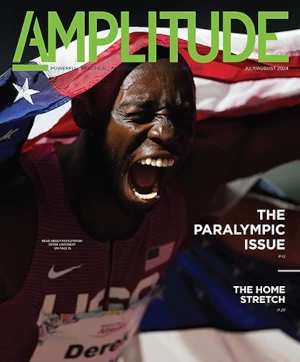Researchers at the University of Bath, England, have developed a way to design and manufacture custom prosthetic liners of different sizes for a patient in less than a day. By providing personalized liners that fit within the same prosthetic socket, the frequency of patients needing clinic visits for socket adjustments could be reduced, improving patient well-being and saving time and money.
To begin the process, a 3D scanner scans the patient’s residual limb. The scanned data is then used to create a full digital model of the residuum to design the personalized liner. The liner, made of a soft polymer neoprene-like material similar to that used in wetsuits, is manufactured using a cryogenic machining technique, which avoids the need for molds. The process takes less than a day from scanning to the physical liner being fitted.
The Bath researchers are trialing their approach with a participant who has a transtibial amputation. Other volunteers will join the study this year for further testing.
“We use pressure sensors inside the liner to check that the pressure is not too high, which could cause skin damage,” said Elena Seminati, PhD, a lecturer in clinical biomechanics at the university. “Secondly, we use motion capture technology to check that the movement of [the participant’s] lower limbs is symmetrical, and we also measure him walking across force plates to ensure there is no overloading in his knee, ankle, and hip joints. We’ve found this new liner reduces the pressure on the stump significantly, reducing the risk of skin damage and making it more comfortable to walk.”
“There’s a window of around 18 months where an amputee decides whether to use prosthetics to learn to walk again or use a wheelchair,” said Vimal Dhokia, PhD, from the university’s department of mechanical engineering. “Unfortunately, this is a time the residuum changes in size and shape as part of the healing process, making it difficult to get a good fitting. Our technology will help achieve a comfortable fit for the patient and really make a difference in helping them walk again and improve their quality of life.”
This story was adapted from materials provided by the University of Bath.



